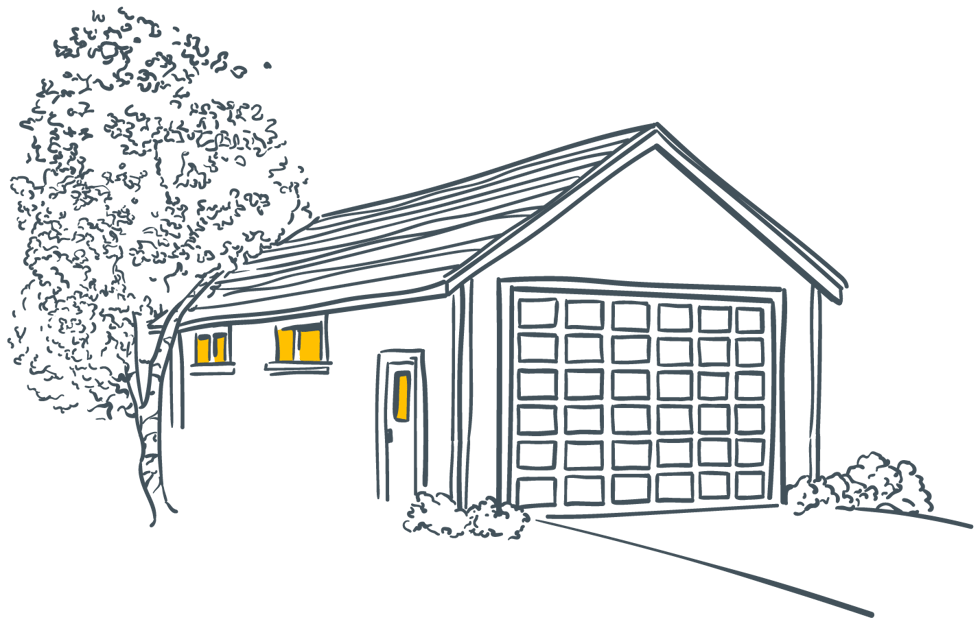Mould is a microscopic fungus that helps nature decompose dead organic material. Both mould and mildew are different types of fungus, but mould is usually shades of black, blue, red, and green, whereas mildew is white.
Mould spores are invisible to the naked eye, and there are many different types. Some have beneficial by products such as yeasts and penicillin, while others live off of food products and the building materials in our houses1.

Mould spores are invisible to the naked eye, and there are many different types. Some have beneficial by products such as yeasts and penicillin, while others live off of food products and the building materials in our houses1.
Mould is important to our ecosystems as it helps break down organic material. In the UK, 39% of renters reported to have problems with damp or mould, which can lead to property damage and health issues2.

Mould is important to our ecosystems as it helps break down organic material. In the UK, 39% of renters reported to have problems with damp or mould, which can lead to property damage and health issues2.
Mold can pose a health risk. The fungi produce allergens (substances which can cause allergic reactions in some individuals). Inhaling or touching mould spores may provoke bodily reactions such as sneezing, runny nose, red eyes and skin rash. Mould exposure can also irritate the eyes, skin, nose, throat and lungs3.
-1.webp?width=158&height=150&name=lungs%20(1)-1.webp)
Mold can pose a health risk. The fungi produce allergens (substances which can cause allergic reactions in some individuals). Inhaling or touching mould spores may provoke bodily reactions such as sneezing, runny nose, red eyes and skin rash. Mould exposure can also irritate the eyes, skin, nose, throat and lungs3.
People are 40% more likely to have asthma when living in a damp or mouldy home, according to the World Health Organisation4.
In fact, a survey reported that 42% of asthma sufferers found mold to be a trigger5.
-1.webp?width=533&height=426&name=ASTHMA%20PUMP%20(1)-1.webp)
People are 40% more likely to have asthma when living in a damp or mouldy home, according to the World Health Organisation4.
In fact, a survey reported that 42% of asthma sufferers found mold to be a trigger5.
Mould spores are like seeds, but invisible to the naked eye, that float through the air and deposit on surfaces. When the temperature, moisture, and available nutrient conditions are correct, the pores can form into new visible mould colonies where they are deposited6.
Mould needs moisture to grow, so the humidity levels in your home are a factor to consider. Excess humidity can lead to dampness and mould. Under the right conditions, mould can grow anywhere in the home and will destroy the material of which it grows on. Mould will grow more rapidly on some material types than others, in particular wood, textiles and cellulose-based materials like cardboard and paper.
.webp?width=281&height=136&name=FLOOR-BOARDS-WHITE%20(1).webp)
Mould is a natural part of our ecosystem. But when household mould growth gets out of hand it can affect the health of both the home and your family. However, every individual is different and some are more susceptible to the negative effects.
In order to limit exposure one should monitor air quality, particularly temperature and humidity levels, as these interact to provide the best conditions for mould growth.
Mould grows by increasing its length of hyphae which look like long, microscopic strings.
In this way, a small colony of mould can grow to cover large surface areas. In order to grow, mould also releases small seed-like spores. When they are released, they are carried through the air or water to a new location7.
If spores land on a damp surface where nutrients are available to eat and the temperature suits them8, they will start to grow their hyphae. Mould spreads on the surface and also downwards into the affected area.
.webp?width=281&height=225&name=SPORE-WHITE%20(1).webp)


What does mold look like? Mould may be mistaken for dirt or other discolorations. But there are a few indicators you can look for:
The colour of mould is influenced by the source of nutrients and how long it has been able to grow. If we are able to see mould, it often appears black or green.
Mould will grow on most building materials, including engineered wood products. It generally appears as woolly or powdery growths.
In some cases, mould can be hidden. It can grow behind wallpaper, panelling and plasterboard, though you may be unable to see it until you look for it. A professional can help you find it by removing small parts of panelling, wallpaper etc to check for mould if you suspect it.
While many labs can clinically verify mould, there are simple tests one can do at home. The APA suggests applying a few drops of fresh 5% solution of household bleach to the stain9.
Usually, mould will turn lighter in colour and nearly disappear within one or two minutes. Other substances that remain the same colour are probably dirt or another form of discolouration.
Read our article on how to get rid of mould here.

The process of mould growth has multiple variables and is a time-dependent process affected by humidity levels, temperature and material for the mould to grow on (building material, furniture, etc)10.



To prevent and control mould growth indoors, the best method is to control the humidity level. This is because mould spores cannot grow if moisture is not present. Healthy indoor relative humidity levels are between 30-60%.

According to the NHS, mould and damp can affect your health. In fact, if you have damp and mould in your home you're more likely to have respiratory problems, respiratory infections, allergies or asthma. Damp and mould can also affect the immune system11.
Mould formation is closely connected to indoor air quality. Insight into temperature and humidity levels indoors allows for effective ventilation. Avoiding excess humidity, condensation on surfaces and excess moisture in materials will decrease the chance of mould growth.
Ventilation is key for many indoor air quality concerns including mould. Ensure ventilation is distributed effectively throughout spaces12.
As mould needs water and nutrients to form, cleaning and removing the mould you see is just step one. It is important to also fix the issue that caused the mould in the first place.
For example, if mould grows due to a water leak, ensure you not only remove the mould but fix the leak as well. This will help to prevent future problems. In addition, dry out water-damaged areas immediately, or if that is not possible within 24-48 hours to prevent mould growth13.

Wave Mini is the perfect first step into understanding the health and comfort level in every room.

Wave Mini is the perfect first step into understanding the health and comfort level in every room.
Bring your Wave Mini and other Airthings monitors online providing on demand access to your indoor air quality data at anytime, from anywhere!

Bring your Wave Mini and other Airthings monitors online providing on demand access to your indoor air quality data at anytime, from anywhere!